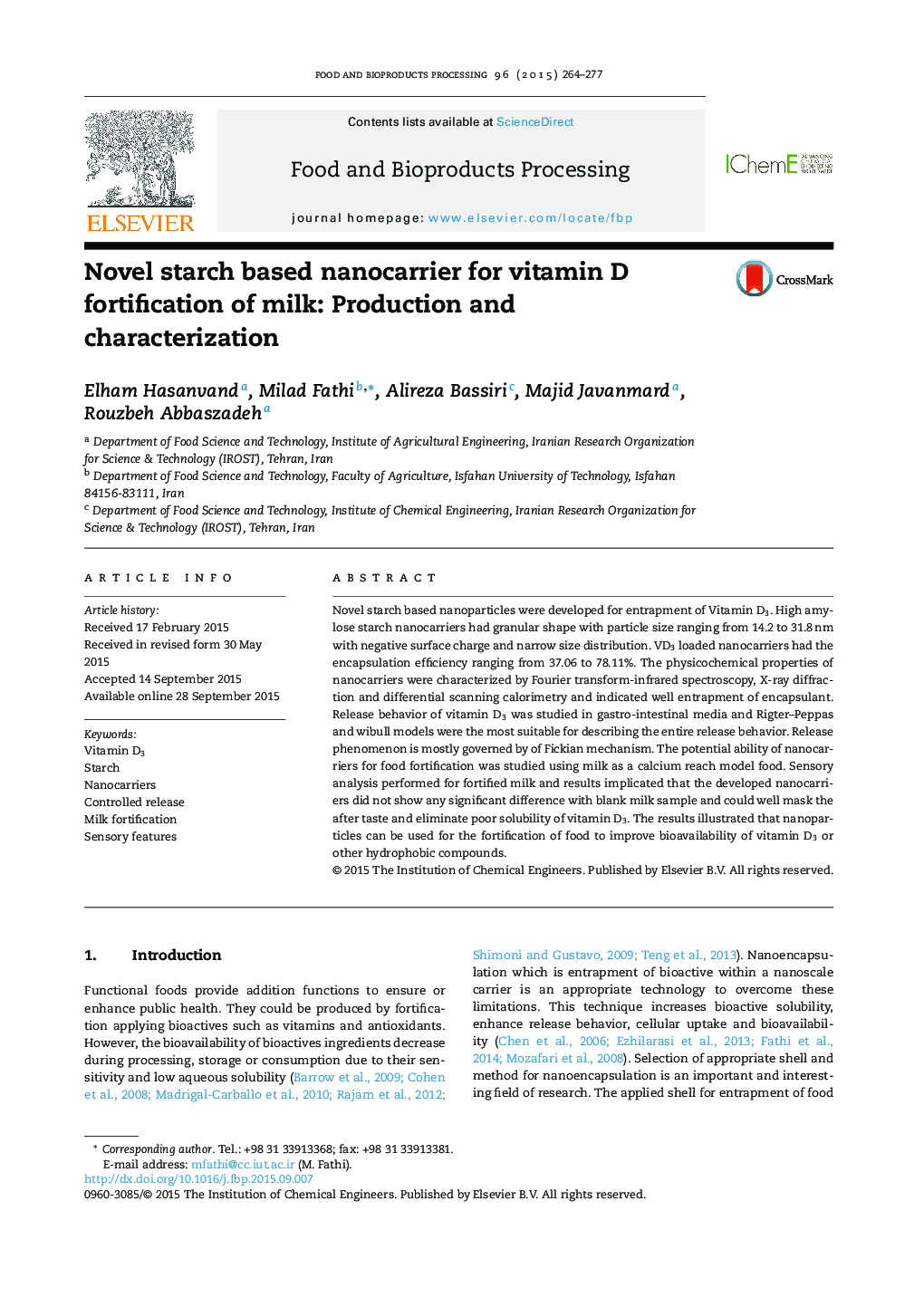| Article ID | Journal | Published Year | Pages | File Type |
|---|---|---|---|---|
| 18843 | Food and Bioproducts Processing | 2015 | 14 Pages |
•Novel high amylose starch based nanoparticles were developed for entrapment of Vitamin D3.•Release of encapsulant can be postponed in gastric media.•Vitamin loaded nanocarriers can be used to produce functional food.
Novel starch based nanoparticles were developed for entrapment of Vitamin D3. High amylose starch nanocarriers had granular shape with particle size ranging from 14.2 to 31.8 nm with negative surface charge and narrow size distribution. VD3 loaded nanocarriers had the encapsulation efficiency ranging from 37.06 to 78.11%. The physicochemical properties of nanocarriers were characterized by Fourier transform-infrared spectroscopy, X-ray diffraction and differential scanning calorimetry and indicated well entrapment of encapsulant. Release behavior of vitamin D3 was studied in gastro-intestinal media and Rigter–Peppas and wibull models were the most suitable for describing the entire release behavior. Release phenomenon is mostly governed by of Fickian mechanism. The potential ability of nanocarriers for food fortification was studied using milk as a calcium reach model food. Sensory analysis performed for fortified milk and results implicated that the developed nanocarriers did not show any significant difference with blank milk sample and could well mask the after taste and eliminate poor solubility of vitamin D3. The results illustrated that nanoparticles can be used for the fortification of food to improve bioavailability of vitamin D3 or other hydrophobic compounds.
